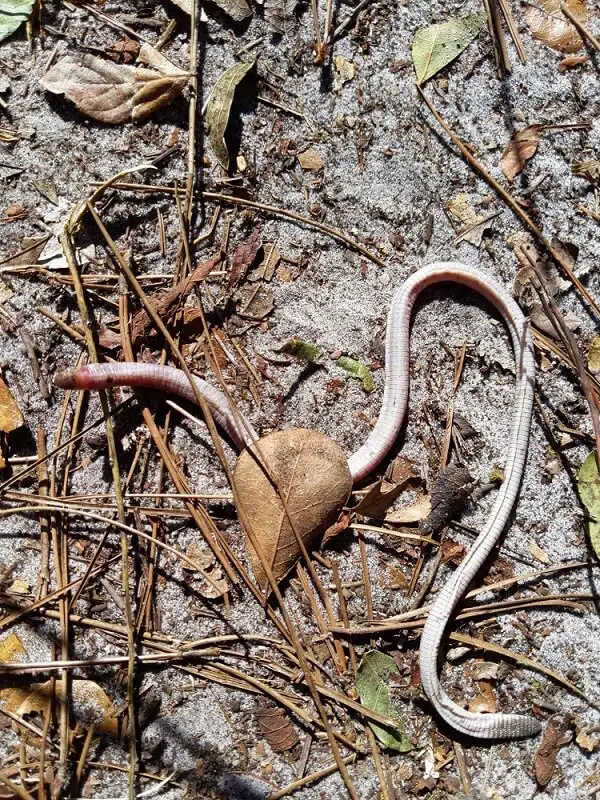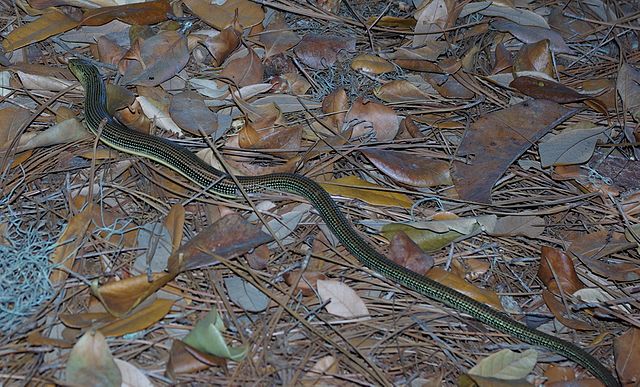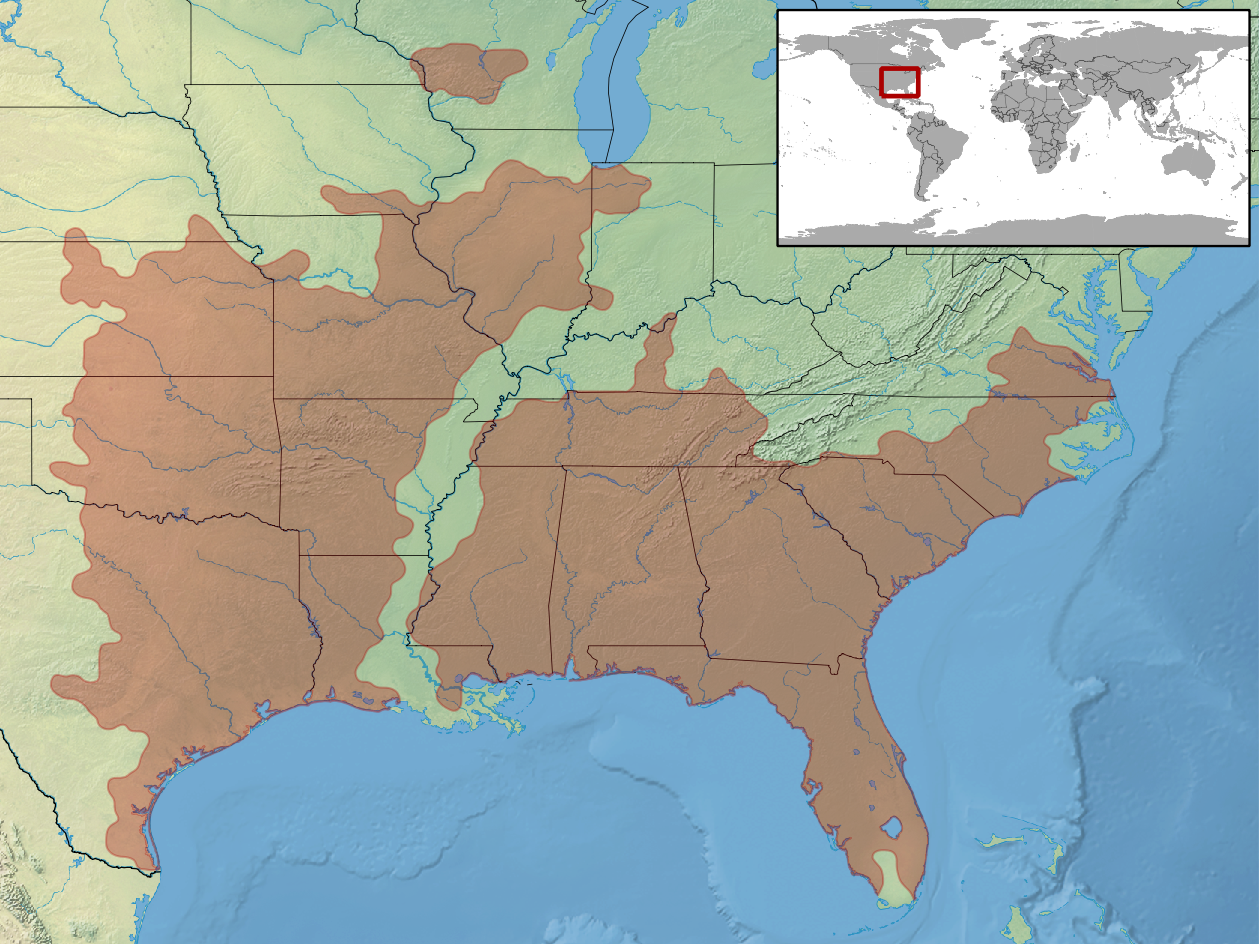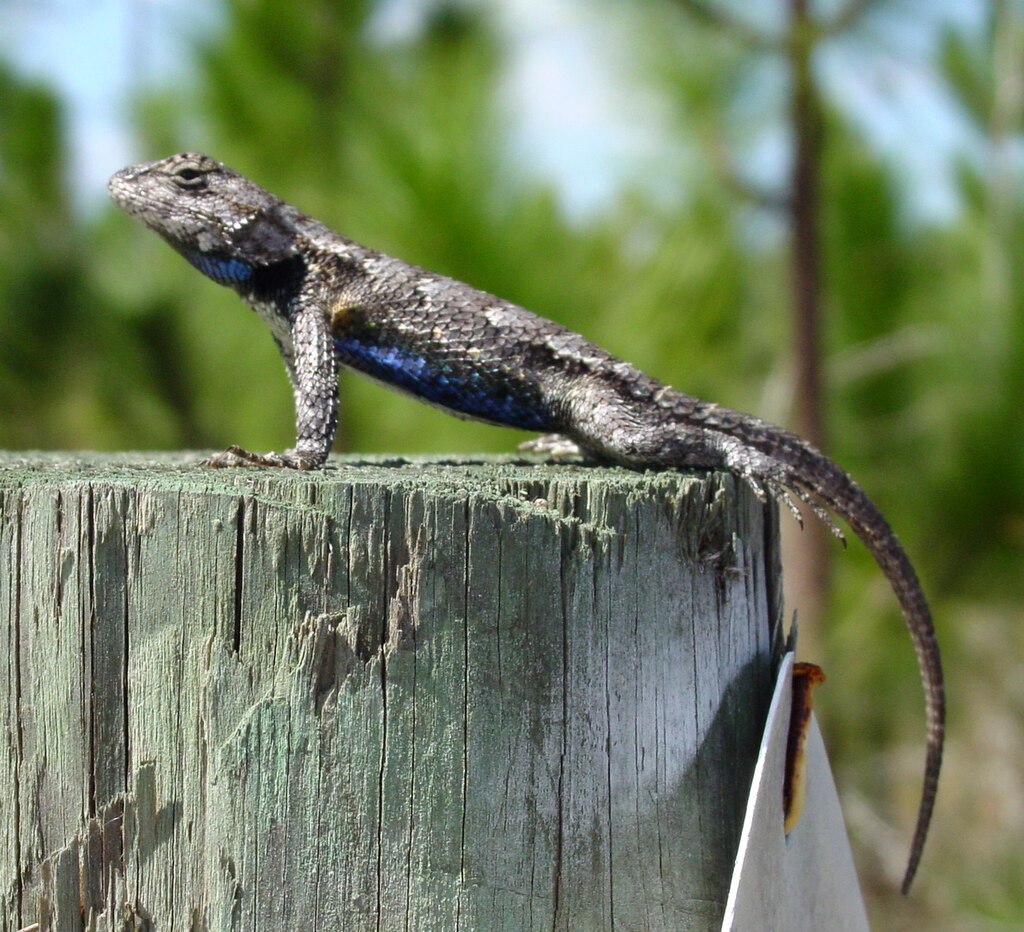Have you seen a lizard in the garden and are wondering what it is and where it comes from? Do you have a gecko in your home and you wondering how to identify it? There are 18 lizards you may see in your backyard or home when living in Georgia.
Here is some more detailed information to help you identify them a little easier.
List of Lizards Can Be Found In Georgia
- North American Worm Lizard
- Green Anole
- Brown Anole
- Eastern Glass Lizard
- Mimic Glass Lizard
- Island Glass Lizard
- Slender Glass Lizard
- Eastern Fence Lizard
- Texas Horned Lizard
- Little Brown Skink
- Coal Skink
- Mole Skink
- American Five-Lined Skink
- Southeastern Five-Lined Skink
- Broad-headed Skink
- Mediterranean House Gecko
- Indo-Pacific Gecko
- Six-Lined Racerunner
1. North American Worm Lizard

Scientific name: Rhineura floridana.
Common name: North American worm lizard, Florida worm lizard, graveyard snake, thunderworm.
The North American worm lizard is mostly found in Florida, but there are sightings in Georgia.
These lizards vary in length from eighteen to thirty centimeters, nose to tip of the tail. They have a shovel like snout and this projects further than the lower jaw.
You cannot see their eyes and they have a body that is covered in scales, which are arranged in rings.
This lizard has a very worm like appearance with absent limbs.
2. Green Anole

Scientific name: Anolis carolinensis.
Common name: Green anole, Carolina anole, Carolina green anole, American anole, American green anole, North American green anole, red-throated anole, American chameleon.
The green anole is native to the southeastern United States. It is sometimes called the American chameleon because of its ability to change colors from brown to bright greens.
The green anole lizard can be found in subtropical areas including South Carolina, North Carolina, Florida, Georgia, Alabama, Mississippi, Texas and Louisiana.
These lizards are arboreal, which means they spend most of their time in trees, but you can often see them on the ground, sometimes in urban areas.
They prefer forest areas with abundant foliage and sunlight.
3. Brown Anole

Scientific name: Anolis Sagrei.
Common name: Brown anole lizard, Cuban brown anole, De la Sagra’s anole.
The brown anole lizard is often called the Bahamian Anole and is native to the Bahamas and Cuba, though it has been introduced widely in the United States and can be found in Georgia, Florida, Alabama, Hawaii, and more.
The brown anole is considered very invasive and they reach high population densities quickly. They consume native lizard species.
These are brown lizards which can range from dark brown to black markings. Some are tan to light on the sides and they are also able to change their color from brown to black. They are identifiable with their orange red to yellow dewlap.
They can grow up to twenty centimeters or eight inches in length.
Related –Green anole vs brown anole: similarities and differences.
4. Eastern Glass Lizard

Scientific name: Ophisaurus ventralis.
Common name: Eastern glass lizard.
This lizard is from the family Anguidae and an endemic to the southeastern United States.
Adults grow up to 108 centimeters (42 inches).
They have scales along their lateral groove with dark stripes under the tail. Their necks have white markings and the older species are sometimes green above and yellow on the underside.

The eastern glass lizard is usually found from South Florida to southeastern Virginia, though they have been seen in Missouri and Oklahoma.
5. Mimic Glass Lizard

Scientific name: Ophisaurus Mimicus.
Common name: Mimic glass lizard, rainbow glass lizard.
The mimic glass is also known as the rainbow glass lizard and is a species of Anguidae that is found in southeastern United States, from Florida to North Carolina and Georgia, to name a few.

These are invertebrates, eating insects as part of their staple diet.
6. Island Glass Lizard

Scientific name: Ophisaurus Compressus.
Common name: Island glass lizard.
The island glass lizard is from the Anguidae family and an endemic in the southeastern United States. You can find this lizard in Florida, southeastern South Carolina and in southeastern Georgia.

These lizards can grow up to 61 centimeters (24 inches). They are slender and long in appearance, looking similar to snakes.
They are brown to yellow in color with a single dark stripe down the side of the body on either side.
They enjoy open habitats and forage during the day.
They can break off their tail to protect them against predators. Their tails do regrow.
7. Slender Glass Lizard

Scientific name: Ophisaurus attenuatus.
Common name: Slender glass lizard.
The slender glass lizard is from the family Anguidae and is a legless lizard and an endemic in the United States.
There are two subspecies of this lizard as they are believed to come from the Eastern Glass Lizard.

Their diet varies from insects to small animals including other lizards.
These lizards have brown to yellow colored bodies with six stripes with white marks on the middle of the scales.
They can grow up to 36 inches.
They have a pointed snout with males and females being around the same size.
8. Eastern Fence Lizard

Scientific name: Sceloporus Undulatus.
Common name: Eastern fence lizard, prairie lizard, fence swift, gray lizard, northern fence lizard, pine lizard.
The eastern fence lizard is from the Phrynosomatidae family and is medium in size often found among rocks, rotting tree stumps, and the edges of forests.
They are native to the eastern United States and can be found in Georgia, Louisiana, Florida, Colorado, Alabama, Arkansas, West Virginia, North Carolina, South Carolina, Southern Illinois, Kentucky, and Tennessee, to name a few.
The Eastern Fence Lizard can grow up to 19 centimeters (7.5 inches) in length and are often gray or brown in color with a dark line that runs along the back of the thigh.
Females tend to be gray with dark lines on their backs, a white belly, and some blue on the belly and throat, while males are brown in summer and green blue in winter with black colors on the sides and throat.
9. Texas Horned Lizard

Scientific name: Phrynosoma Cornutum.
Common name: Texas horned lizard.
The Texas horned lizard is native to the east of Texas in the Piney Woods region.
They are believed to have come from pets which had been released or escaped during the 19th century when they became popular pets.
These lizards have a blunt snout with a rounded body with bone horns that extend from the cranium.
The Texas Horned Lizards is the largest of the fourteen horned lizard specialist in the United States.
10. Little Brown Skink

Scientific name: Scincella lateralis.
Common name: Little brown skink, ground skink.
The little brown skink is a small skink from the eastern United States and Northern Mexico.
They are one of the smallest reptiles found in North America and grow up to 5.5 inches including their tails.
They have a copper colored back with a yellow underbelly.

These lizards live in a number of different habitats from hedges to the edge of a stream and forests to an area in your garden with leaf litter.
11. Coal Skink

Scientific name: Plestiodon Anthracinus.
Common name: Coal skink.
The coal skink is often found in North America.
These lizards can grow up to eighteen centimeters / seven inches with light colored stripes that stretch to the tail.
There are two subspecies, the Northern coal skink and the Southern coal skink.
The Southern coal skink subspecies have a spotted appearance with approximately 28 rows of scales across the middle of the body.

They enjoy humid areas of wooded hills and can be found under stones and leaf litter.
Both species can be found in Georgia.
12. Mole Skink

Scientific name: Plestiodon Egregius.
Common name: Mole skink.
The mole skink is found in the southeastern United States and is small in size.
There are five subspecies including the Florida Keys: Mole Skink, Cedar Key Mole Skink, Blutail Mole Skink, Peninsula Mole Skink, and the Northern Mole Skink.

They can be found in sandhills and shrub. They often bury themselves underground.
13. American Five-Lined Skink

Scientific name: Plestiodon fasciatus.
Common name: American five-lined skink.
The American five-lined skink is found in north America and is a common lizard in the United States and Canada.
This lizard grows up to 8.5 inches (21 centimeters).
They are dark brown and black when young with white and yellow stripes along the body with a bright blue tail.
As they age the color fades and even the stripes may start to vanish.
The dark brown color becomes lighter.

You can find these skinks everywhere from New York to Georgia with increasing numbers being experienced in Maryland and Northern Virginia.
14. Southeastern Five-Lined Skink

Scientific name: Plestiodon Inexpectatus.
Common name: Southeastern five-lined skink.
The southeastern five-lined skink has five narrow lines along with their bodies that lighten with age. They are found in the southeastern United States.
These skinks are slightly larger than the American five-lined skink with narrower stripes.
When these skinks are younger, they are bright blue with a purple tail with their stripes becoming orange to bright red as they get closer to the head.
You can find these in wooded areas.

Related –Common lizards with red (or orange) heads.
15. Broad-headed Skink

Scientific name: Plestiodon laticeps.
Common name: Broad-headed skink, broadhead skink.
The broad-headed skink comes from the southeastern United States.
It is a large skin and can grow up to 33 centimeters (13 inches) from snout to the tip of the tail.
These skinks have a triangular head resulting from their wide jaw.
Adult males are olive brown with bright orange heads when it is mating season, while females have five light stripes that run down their back to their tail.

It’s not uncommon to find the broad-headed skink in an urban area, they prefer forest areas.
16. Mediterranean House Gecko

Scientific name: Hemidactylus Turcicus.
Common name: Mediterranean house gecko.
The Mediterranean house gecko is a common house gecko from the Mediterranean that has been introduced throughout the world.
These are nocturnal geckos and are insectivores.
They are small and grow up to fifteen centimeters or just shy of six inches. They have large eyes and a tan tail that has black spots or stripes.
These gecko populations are growing worldwide. You can find them inside your home, hidden in cracks or in the walls.
These geckos have rounded snouts with a concave forehead and varying length toes.
They pose no threat or endangerment and they can be found from the Mediterranean to the Canary Islands and northern Morocco to Georgia in the United States.
17. Indo-Pacific Gecko

Scientific name: Hemidactylus Garnotii.
Common name: Indo-Pacific gecko, Garnot’s house gecko, fox gecko, Assam greyish brown gecko.
The Indo-pacific gecko is a gray brown gecko that comes from India, Philippines, Southeast Asia, Australia and Polynesia.
These geckos can grow up to five inches / thirteen centimeters in length.
Their markings look lighter in the daylight.
The gray or brown body is almost translucent at night with a yellow or orange underbelly.
They have long heads with a narrow snout.
18. Six-Lined Racerunner

Scientific name: Aspidoscelis Sexlineatus.
Common name: Six-lined racerunner.
The six-lined racerunner lizard comes from the United States and Mexico and can be found in southeastern to South Central United States including Georgia.
They are dark green, brown or black lizards with six green to yellow stripes that go from the head to the tail.
They have a white underbelly with males having some light blue on the belly. Males sometimes have a pale green throat.
The tail is twice the length of the body, they are whiptail lizards and are energetic and very fast moving. They can reach up to 29 kilometers (19 miles) per hour.
They are insectivores that live in grasslands, floodplains, woodlands, and rocky outcrops.
Further Reading:
I’m in Georgia, near Atlanta. Yesterday, December 7, 2021, I witnessed a fight between a Mockingbird and a lizard. The bird was struggling. Before I could get to it, the bird flipped feet over head and when I got close enough to see, I witnessed the bird die. Attached to the bird’s beak, was a brown Lizard, with no tail. I assumed the bird had grabbed it, but I swear it looked like the Lizard had taken the entire bird’s beak into it’s mouth. I pulled the lizard off the bird and the bird began bleeding profusely from its mouth.
The lizard attempted to bite me, but when I laid him on the concrete he kept his mouth open, watching my every move. I didn’t get a photo or video of “the fight,” but I did get a photo of the lizard with his mouth open, full of the bird’s blood. It was BIZARRE!!! I moved the lizard to a pile of leaves and never saw him again. Are lizards normally aggressive enough to kill a full grown Mockingbird??? Even with his tail, he couldn’t have been more than about 5″ long. Anyone ever heard of this behavior?
No, poor bird … 😢 but not surprised. I just learned Skinks have teeth .. Just last week 3 of them chewed through some wires in our thermostat outside. Went without air or heat for almost a week. Thankfully we have great weather here in North Georgia… The guys finally came out to fix it. thank God it was only $85. Total. easy fix.. but wow was that a shocker. Not a fan of Amy lizards! 🤣
Saw a small lizard that I have not been able to identify in my backyard. It was black, I mean midnight black. Does anybody know what kind of lizard it might be?
Saw a 6 Lined Race Runner in the garden just now. 08/31/22 , 3pm. South Georgia. Camilla
I just saved two American five lined skinks from starvation in the backyard.But, I didn’t take a video or picture
Some thoughts about the Carolina Anole. These green lizards were very common in South Florida when I moved there 65 years ago. I have always been a fan of reptiles and tend to observe rather than capture. But in those days these lizards were pure green, without that diamond pattern on their backs. When the Brown Anole began to be seen down there, they tended to crowd out the Carolina Anoles and for a long time they were almost a rarity.
Now they appear to have made a bit of a comeback, both in S. Florida and here in my new home in Western Georgia. My speculation is that the Carolina Anoles and the Brown Anoles interbreed and that is why the Carolinas have been showing that diamond pattern on their backs.
Am I off track here?